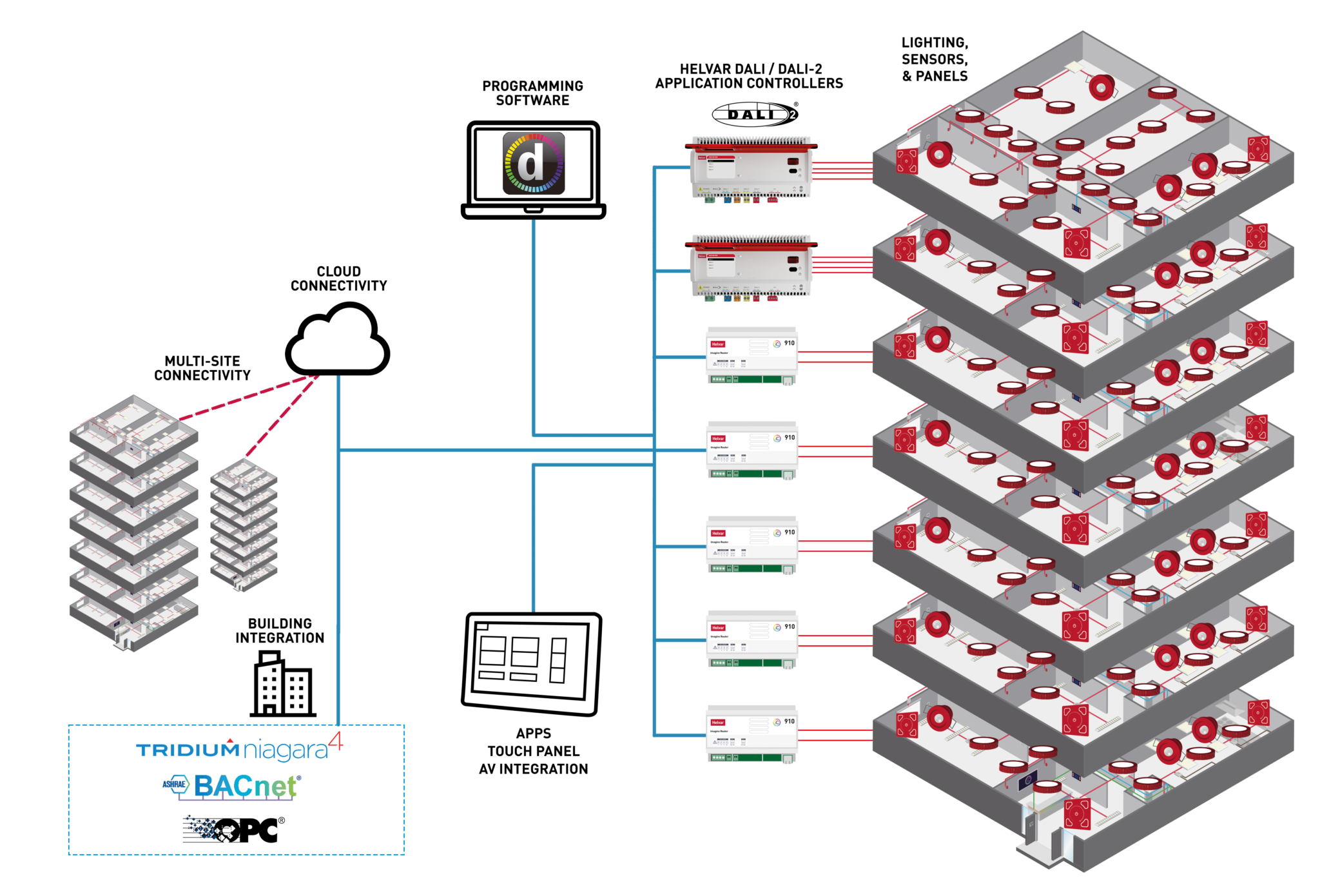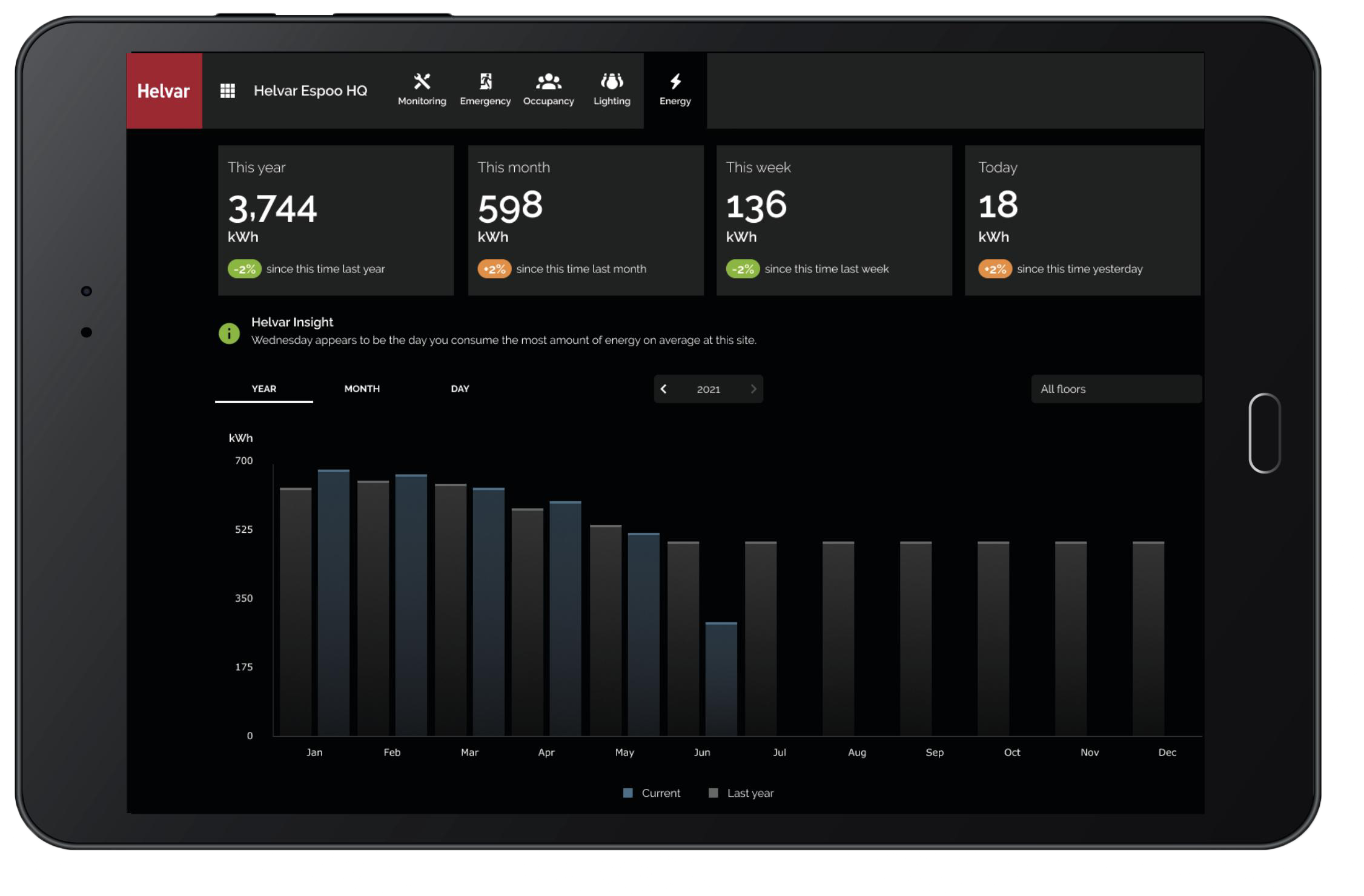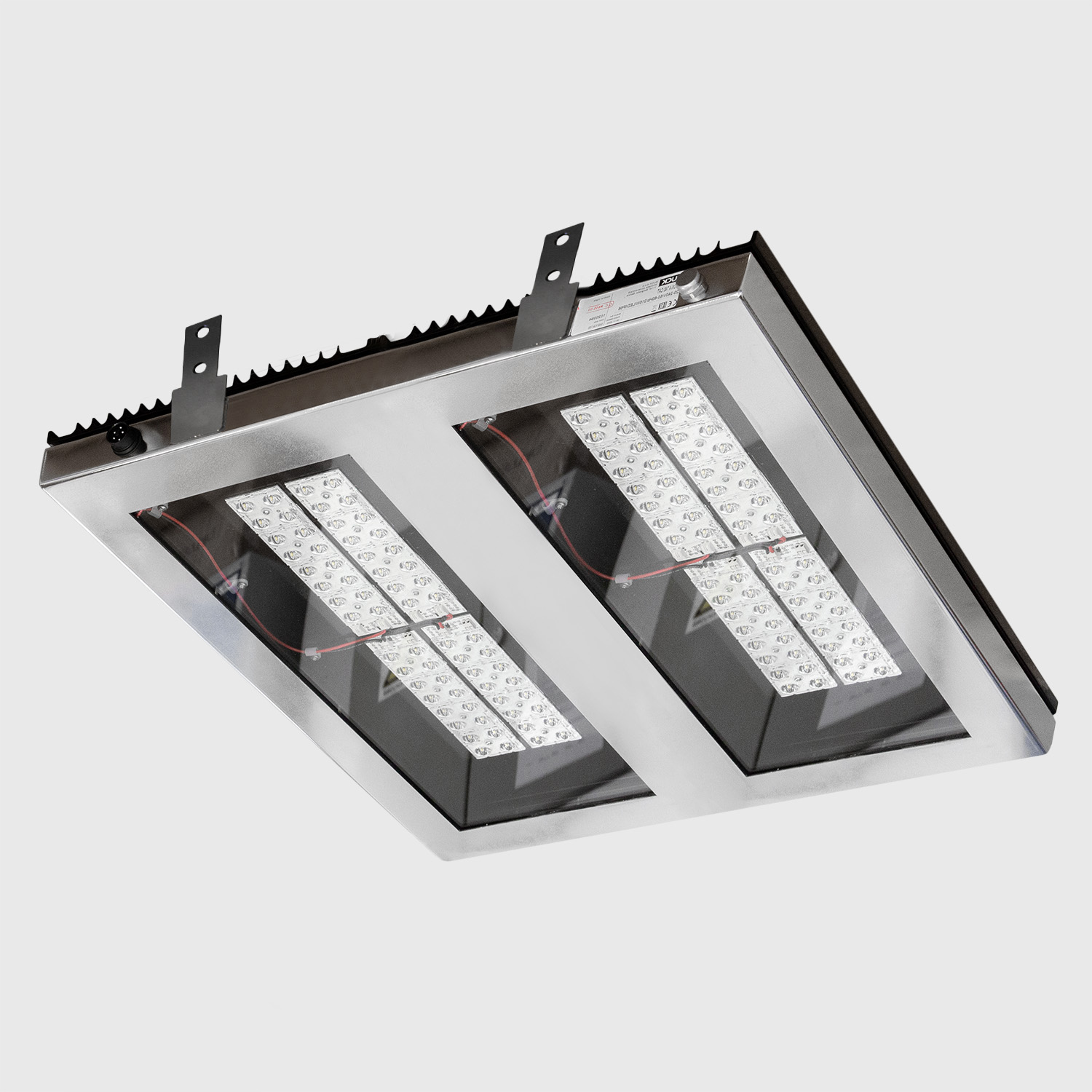In today’s world, where energy conservation and sustainability are paramount, lighting management systems play a crucial role in reducing energy consumption and enhancing efficiency. As business owners alike seek innovative solutions to cut down on energy costs, the shift from traditional lighting to advanced lighting management systems has become a game-changer. Among the leaders in this field, our partner Helvar stands out with its state-of-the-art solutions, offering significant energy savings and improved lighting quality.
The Evolution of Lighting Systems
Traditional lighting systems in buildings like offices, healthcare premises, educational, retail, industrial facilities etc. primarily based on fluorescent, incandescent, metal-halid, mercury bulbs, have long been the norm. However, these systems are often inefficient, consuming large amounts of energy and requiring frequent maintenance. The advent of LED technology marked a significant step forward, offering better efficiency, longer lifespan, and improved light quality.
Yet, simply switching to LED lighting is not enough. To maximize energy savings and optimize lighting conditions, integrating LED technology with advanced lighting management systems is essential. These systems offer precise control over lighting conditions, adapting to the needs of the environment and its occupants.
Key Features of Advanced Lighting Management Systems
1. Occupancy Sensors
Occupancy sensors are a cornerstone of energy-efficient lighting systems. These sensors detect the presence of individuals in a room and adjust the lighting accordingly. When a room is unoccupied, the sensors automatically dim or turn off the lights, reducing unnecessary energy consumption. This feature is particularly beneficial in commercial spaces, where lighting needs can vary throughout the day.
2. Daylight Sensors
Daylight sense is another innovative feature that maximizes the use of natural light. Sensors measure the amount of natural light in a space and adjust the artificial lighting to maintain a consistent illumination level. This not only reduces energy usage but also creates a more comfortable and visually pleasing environment.
3. Smart Reports and Analytics
Modern lighting management systems offer advanced reporting and analytics tools. These tools provide insights into energy usage, identifying patterns and areas where further savings can be achieved. By understanding how and when energy is consumed, businesses can make informed decisions to optimize their lighting systems and reduce costs.
4. Customizable Lighting Scenes
Customizable lighting scenes allow users to create and save specific lighting settings for different activities or times of the day. Whether it’s a bright setting for a conference room during a meeting or a softer ambience for a restaurant in the evening, these scenes can be easily activated, enhancing both functionality and energy efficiency.

Benefits of Upgrading to Advanced Lighting Management Systems
1. Significant Energy Savings
By integrating LED technology with advanced control systems, businesses can achieve substantial energy savings. According to Helvar, upgrading from traditional fluorescent lighting to a smart LED system can result in energy savings of up to 85%. This reduction in energy consumption translates directly into cost savings, making the investment in modern lighting systems highly cost-effective.
2. Improved Lighting Quality
Advanced lighting systems provide consistent and high-quality illumination. With features like daylight harvesting and customizable scenes, spaces can be lit in a way that enhances productivity and comfort. Better lighting quality can also contribute to improved mood and well-being for occupants.
3. Enhanced Sustainability
Reducing energy consumption through efficient lighting systems contributes to broader sustainability goals. Lower energy usage means reduced greenhouse gas emissions, helping businesses and individuals reduce their environmental footprint. This is increasingly important as more organizations commit to sustainability and corporate social responsibility initiatives.
4. Increased Lifespan and Reduced Maintenance
LED lights have a longer lifespan compared to traditional bulbs, and when combined with smart controls, their longevity is further enhanced. This reduces the need for frequent replacements and maintenance, resulting in lower operational costs and less disruption.

Conclusion
Incorporating advanced lighting management systems is a smart move for anyone looking to enhance energy efficiency and sustainability. With features like occupancy sensors, daylight harvesting, and smart analytics, these systems offer precise control over lighting, leading to significant energy and cost savings. Helvar‘s cutting-edge solutions with Buck’s products exemplify how modern technology can transform traditional lighting into an intelligent, sustainable, and highly efficient system. As the world continues to prioritize energy conservation, investing in advanced lighting management systems is a step towards a brighter and greener future.











